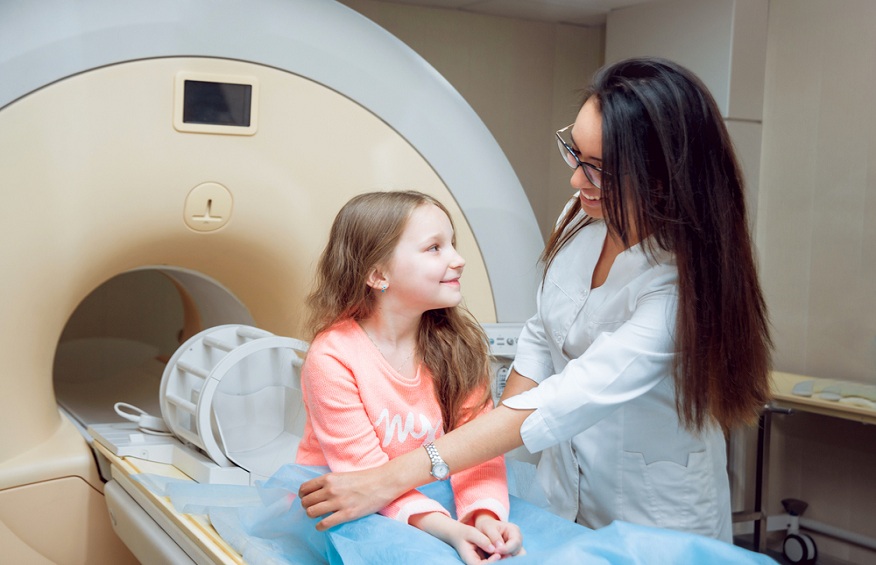Overview
Doctors employ medical imaging (x-ray, CT, MRI, ultrasound) as one of their primary tools for problem solving. A proper diagnosis may often be made or not based on the quality of the medical pictures and the radiologist’s expertise in interpretation. In the best of situations, patients who obtain subpar imaging must spend time making appointments for follow-up exams; in the worst, they are kept in the dark, unable to acquire a diagnosis, and facing hefty medical costs.Read more to know the proper tips before picking the best diagnostic imaging clinic–
1. Does the imaging facility have top-notch equipment?
Can you make out the irregularity in cerebral white matter represented by the leftward-pointing arrow in the brain? With the exception of the fact that one picture was taken using a 3T MRI and the other using a 1.5T MRI, the aforementioned photos are practically similar and are from the same patient. The tesla (T) represents the magnetic field intensity of an MRI machine. 3T MRI machines are superior than 1.5T MRI machines in terms of strength and are the best option for imaging delicate musculoskeletal tissues such ligaments and tendons, meniscus, and intervertebral discs. The magnetic strength (T) of an MRI system may have a big influence on image quality, as the pictures above show. Radiologists often search for minor abnormalities that might result in a misdiagnosis if overlooked.
2. Do radiologists with specialized training evaluate images?
A radiologist is a physician who interprets imaging results, as was previously noted. Following the interpretation of an imaging scan by a radiologist, the ordering physician (such as an orthopedic surgeon, family physician, neurosurgeon, etc.) receives the data and may discuss them with the patient. Many radiologists go on to specialize in a specific area of radiology (subspecialty) after medical school and radiology residency, such as: Neuroradiology: a specialty focused on disorders affecting the brain and spinal cord . Mammography, which specializes in breast disorders. Musculoskeletal radiology, which specializes in disorders of the bones and joints Each subspecialty in radiology (brain, stomach, bones, breasts, etc.) is associated with a particular bodily system. Following residency, specialty-trained radiologists pursue a fellowship where they study just their target body system for a period of one to two years. Specialty radiologists often have more years of training, which helps them diagnose imaging abnormalities on scans pertaining to their area of specialization.
3. Is there no cost for repeat imaging?
Sometimes studies simply don’t work out the way they should, regardless of the quality of the imaging technology or the proficiency of the interpreting radiologist. Artifacts, or characteristics that appear in the final picture but aren’t really present, are often the cause of poor quality photos. Imaging abnormalities may arise from metallic artifacts from implanted medical equipment, such as pacemakers or hip replacements, or from patient movements during the examination. In cases when artifacts result in subpar picture quality, radiologists will report photos that “are not of diagnostic quality.” This statement indicates that the imaging study’s inadequate picture quality prevents any conclusions from being made. Imaging facilities need to provide patients with complimentary follow-up exams in these situations. Unfortunately for patients, not all imaging centers follow this protocol. How to determine if a facility provides free follow-up imaging
4. Is the imaging facility certified by the ACR?
With more than 38,000 active physician members, the American College of Radiology (ACR) is the leading professional association for radiologists and imaging facilities. Providing patients and society with high-quality medical imaging is the main goal of the ACR. Medical imaging facilities that choose to participate in the ACR’s accreditation process go through a rigorous screening procedure. High-quality medical imaging is often guaranteed by an imaging facility with ACR accreditation. How to confirm whether an imaging facility has earned an ACR accreditation
5. Are imaging findings guaranteed in terms of time?
It is well recognized that waiting for medical findings may cause worry, which is what is known as test result anxiety. Even in times of catastrophic news, patients often report that the uncertainty of waiting for medical findings is more upsetting than the actual outcomes. Patients anticipate receiving their outpatient imaging findings one to three days after their visit. Radiologists agree that patients should get fast imaging findings to minimize test-related anxiety and enable therapy to begin when needed. How to estimate how long it will take to get your findings Two methods for determining turnaround time are as follows:
• On their websites, a lot of imaging facilities will make their turnaround time visible to the public. A fast internet search may give patients an idea of turnaround times.
• Front desk staff members often are aware of the typical turnaround time for imaging scan findings. Find out from a scheduler on the phone with the imaging facility how long patients typically have to wait for their findings.
6. Price
There is a big difference in price between an independently run clinic and a hospital-based institution when it comes to any diagnostic procedure. Prices at a hospital are usually much higher than those at an independently run clinic.You could question, why is that? The overhead of hospitals is greater than that of independent radiology clinics. A hospital’s expenses must be greater to offset expenditures such as personnel since it is open twenty-four hours a day, seven days a week. And you bear the price of this. This might imply that you pay more because you haven’t reached your deductible or that you pay a larger copay since the cost is greater.
7. Place
It will be important to you that the diagnostic process journey is handy for you. It will take a lot of time to go there and back if you have to drive across town or even to the next city to have your treatment done at the closest hospital.To save time, why not locate a radiology clinic in your area? There are nearby independently owned radiology clinics. Due to the widespread belief that the treatment must be completed in the hospital, the clinic often sees a decrease in clientele.More importantly, isn’t parking a must while visiting a hospital? Typically, you have to search for a spot by driving about or park in a garage that is distant from the structure. However, it is just the start. Then you’ll discover that you have to go a distance to enter the hospital.
In summary
In summary, choosing the best diagnostic imaging center is essential to guaranteeing precise and prompt medical evaluations. There are a number of things to take into account while looking for health imaging services in the USA. You may make an educated choice that puts your health and wellbeing first by using the previously mentioned advice, which includes considering the clinic’s reputation, personnel credentials, services provided, and equipment quality. It’s important to keep in mind that selecting a diagnostic imaging clinic has a big influence on how accurately you are diagnosed and treated in the future, so you shouldn’t make this choice hastily. You can be sure in the quality of the medical imaging services you get by taking the time to investigate and choose the finest clinic, which will eventually improve your general health and peace of mind.

